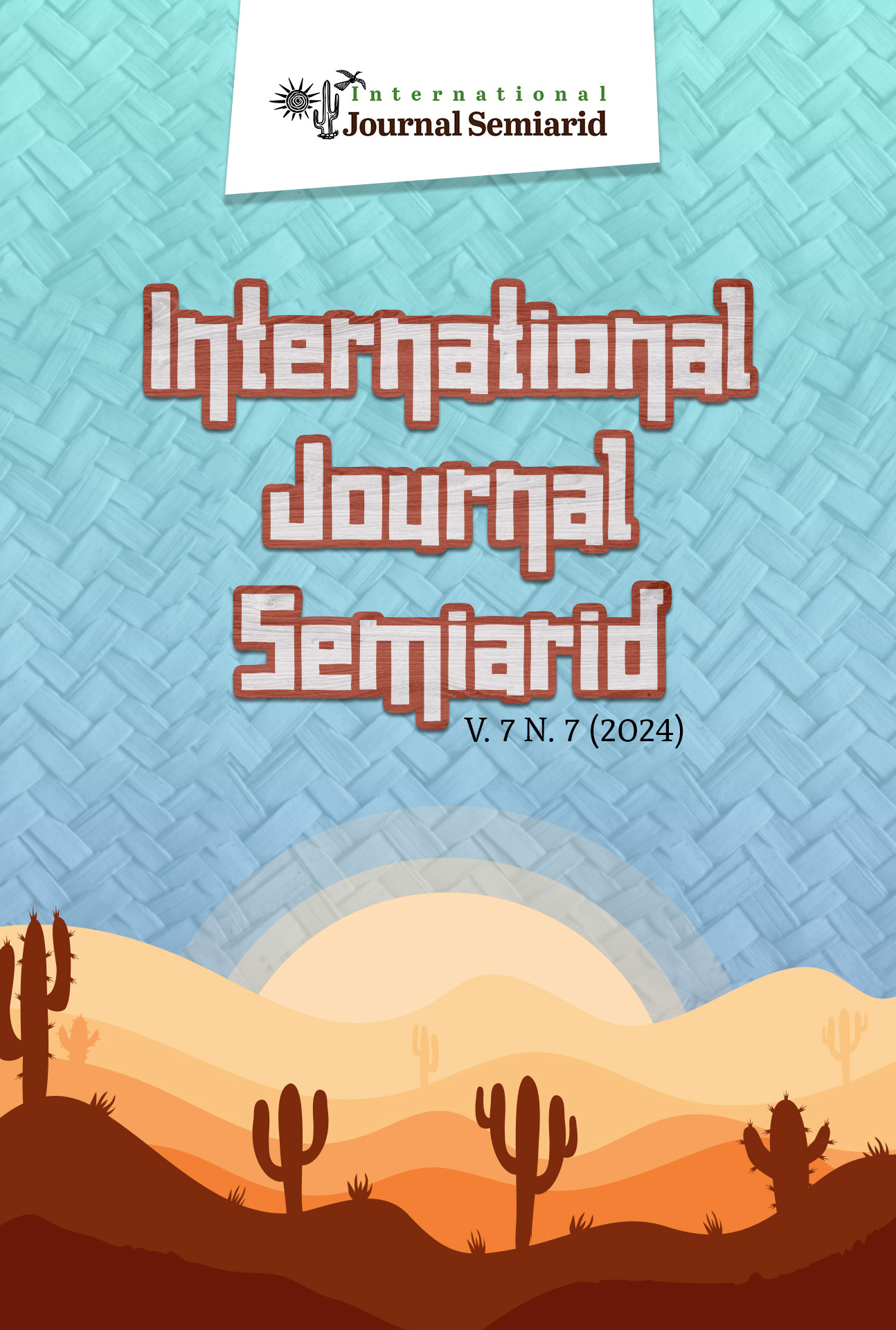CORRELATION BETWEEN THE URBAN CLIMATE SYSTEM AND DENGUE CASES IN FOZ DO IGUAÇU: THERMO-HYGROMECTRIC STUDY BETWEEN THE MONTHS OF FEBRUARY TO MAY 2023
DOI:
https://doi.org/10.56346/ijsa.v7i7.234Keywords:
Urban Climate System, Dengue, Foz do IguaçuAbstract
Urban climate is characterized by the climatic conditions of a city. Based on the interest in understanding these climatic peculiarities, Monteiro, in 1975, created the Urban Climate System, a methodology that takes into account the dynamics between climatic phenomena, the interaction with the earth's surface and urban activities, responsible for reflecting on the atmosphere and causing disturbances in local climate conditions. The main objective of this work was to discuss and analyze the spatial distribution of dengue, understanding the direct and indirect relationships with the measurement of temperature and relative humidity in different points of the city of Foz do Iguaçu between the months of February and May 2023. The methodology used was based on the four levels of geographic research presented by Libault (1971), organizing and systematizing each stage of the research. The results showed that in February the climatic conditions were favorable to the proliferation of the Aedes Aegypti mosquito, placing the city on alert level between 1000 and 2000 reported cases. Between March and April, cases increased exponentially, exceeding 4,000 notifications due to the rise in temperature. In May, cases began to decrease, reaching less than 1,000 notifications. This is due to the drop in temperatures and increase in relative humidity.
References
ABDALLAH, A. DE P; BELENTANI, L. M. Análise dos casos de dengue hemorrágica no Paraná. Revista Uningá, v. 28, dez. 2010.
AYOADE, J.O. Introdução a climatologia para os trópicos. 4.ed. Rio de Janeiro: Bertand Brasil, 1996.
FERREIRA, J. S. TEORIA E MÉTODO EM CLIMATOLOGIA. Revista Geonorte, Edição Especial 2, v. 1, n. 5, p. 766 - 773, 2012.
FIOCRUZ. INFO DENGUE. Disponível em: https://info.dengue.mat.br/services/api. Acesso em: 28 maio. 2023.
INSTITUTO NACIONAL DE METEOROLOGIA. Tabela de dados das Estações. Disponível em: https://tempo.inmet.gov.br/TabelaEstacoes/A846. Acesso 03 junho. 2023.
LABOCLIMA – UFPR. SACDENGUE – Sistema de Alerta Climático de Dengue. Disponível em: http://www.terra.ufpr.br/portal/laboclima/sacdengue/. Acesso em: 28 maio. 2023.
LIBAULT, A. Os quatro níveis da pesquisa geográfica. Métodos em Questão, Instituto de Geografia (USP), São Paulo, n. 1, 1971, p. 1-14.
MENDONÇA, F. DE A; DANNI-OLIVEIRA, I.M. Noções básicas de climatologia no Brasil. São Paulo: Oficina de textos, 2007.
MENDONÇA, F. DE A; SOUZA, A. V. E; DUTRA, D. DE A. Saúde pública, urbanização e dengue no Brasil. Sociedade & Natureza, 23 nov. 2009.
MENDONÇA, F. DE A; CUNHA, F.C.A; LUIZ, G.C. Problemática socioambiental urbana. Revista da Associação Nacional de Pós-graduação e pesquisa em Geografia (ANPEGE). P.331-352, V.12, N.8, 2016.
MINISTÉRIO DA SAÚDE. Doenças infecciosas e parasitárias: guia de bolso. 8. ed. Brasília: Ministério da Saúde. Secretaria de Vigilância em Saúde. Departamento de Vigilância Epidemiológica, 2010.
MONTEIRO, C.A DE F. Teoria e clima urbano. São Paulo: EDUSP, 1975.
MONTEIRO, C. A DE F; MENDONÇA, F. (Org). Clima urbano. 2. ed. São Paulo: Contexto, 2015. 192 p.
SANT’ANNA NETO, J.L.Da Climatologia Geográfica à Geografia do Clima: gênese, paradigmas e aplicações do clima como fenômeno geográfico. Revista da ANPEGE, v4, p.61-88, 2008.
SANT’ANNA NETO, J. L . Clima e Organização do Espaço. Boletim de Geografia, v.15, nº 01, p.:119 – 131. UEM: Maringá, 2015.
SANTOS JUNIOR, E.P DO; SCHEER, M.A.DA S; QUEIROS NETO, E; PALHARES, J.M.
Tipificação climática de Foz do Iguaçu-PR e de padrões de variação na disponibilidade de água para a cultura da soja. Ciência Geográfica - Bauru - XXV - Vol. XXV - (3): Janeiro/Dezembro – 2021.
SILVA, J. S; MARIANO, Z. DE F; SCOPEL, I. A influência do clima urbano na proliferação do mosquito Aedes aegypti em Jataí (GO) na perspectiva da geografia médica. Revista Brasileira de Geografia Médica e da Saúde, 1 jun. 2007.
U.S.G.S. EarthExplorer. Disponível em: https://earthexplorer.usgs.gov/. Acesso em: 01 junho 2023.


